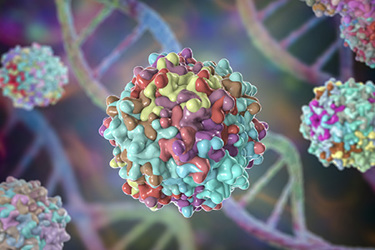Decoding The Differences Between Adeno-Associated Virus, Gammaretrovirus & Lentivirus

Genetic engineering offers a potential efficacious treatment to the numerous gene disorders in existence, replacing damaged or dysfunctional DNA with a healthy copy to treat the underlying cause of the disease. The majority of clinical trials underway are investigating viral vector-mediated gene therapies, which use delivery devices such as adeno-associated viruses (AAV), gamma retroviruses (γ-RV) and lentiviruses (LVV). It can be challenging to choose the best delivery tool, but selecting the right viral vector for your gene therapy project is central to its success. It is important to consider factors such as integrating ability, length of the transgene, and whether it will be used in an in vivo or ex vivo capacity.
AAVs carry genetic information in the form of DNA and do not integrate it into the genome of the host cell. They are limited in packaging capacity, but ultimately can achieve higher viral titers. Retroviridae carriers, such as gamma retroviruses and LVs, can integrate their genetic material into the target cell genome, providing stable and persistent expression of the transgene. Lentiviruses can transduce both dividing and non-dividing cells, allowing them to infect a range of cell populations, including stem cells, cardiomyocytes, and other cardiac cells. And while LVs are predominantly used in ex vivo gene therapies, recent studies have demonstrated the potential for their use in in vivo therapies. Innovations are constantly expanding the opportunities for success in this market, and it is essential to apply a comprehensive knowledge of viral vector tools in optimizing your product for commercial success.
Get unlimited access to:
Enter your credentials below to log in. Not yet a member of Cell & Gene? Subscribe today.
